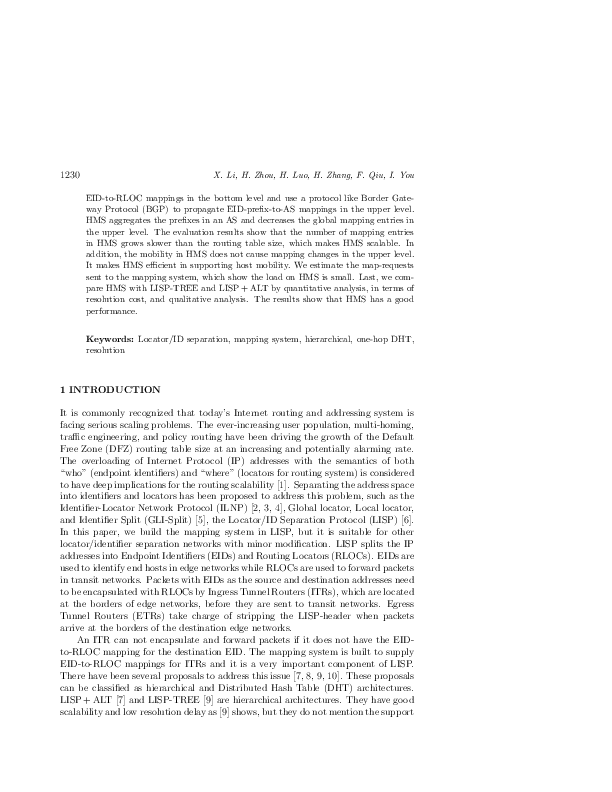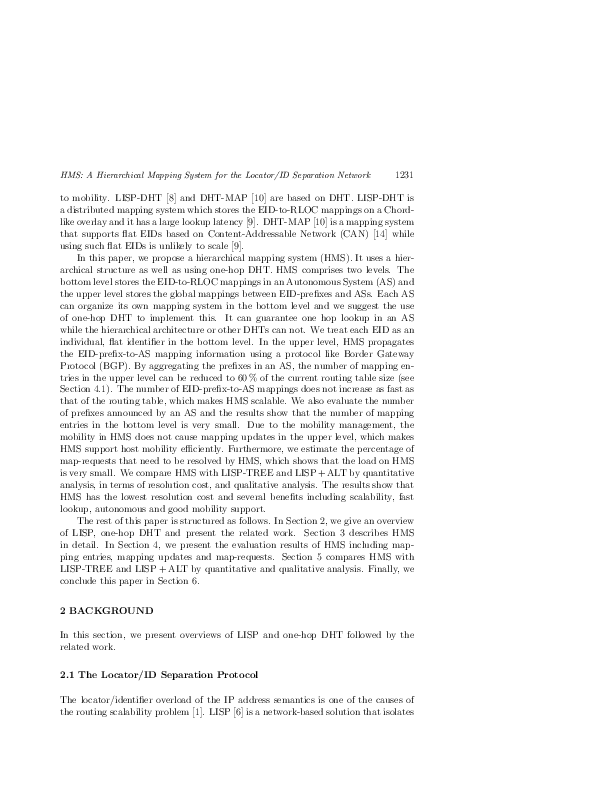HMS: A Hierarchical Mapping System for the Locator/ID Separation Network
keywords: Locator/ID separation, mapping system, hierarchical, one-hop DHT, resolution
The current Internet is facing serious scalability problems and the overloading of Internet Protocol (IP) addresses is regarded as an important reason. The Locator/ID Separation Protocol (LISP) is proposed as a network-based solution that separates IP addresses into Routing Locators (RLOCs) and Endpoint Identifiers (EIDs) to address the routing scalability problems. It is a critical challenge for LISP to design a scalable and efficient mapping system. In this paper, we propose a hierarchical mapping system (HMS). HMS consists of two levels with the bottom level maintaining the EID-to-RLOC mappings in an Autonomous System (AS) and the upper level storing the mappings between EID-prefixes and ASs in the global network. We adopt one-hop Distributed Hash Table (DHT) to organize EID-to-RLOC mappings in the bottom level and use a protocol like Border Gateway Protocol (BGP) to propagate EID-prefix-to-AS mappings in the upper level. HMS aggregates the prefixes in an AS and decreases the global mapping entries in the upper level. The evaluation results show that the number of mapping entries in HMS grows slower than the routing table size, which makes HMS scalable. In addition, the mobility in HMS does not cause mapping changes in the upper level. It makes HMS efficient in supporting host mobility. We estimate the map-requests sent to the mapping system, which show the load on HMS is small. Last, we compare HMS with LISP-TREE and LISP+ALT by quantitative analysis, in terms of resolution cost, and qualitative analysis. The results show that HMS has a good performance.
reference: Vol. 32, 2013, No. 6, pp. 1229–1255


